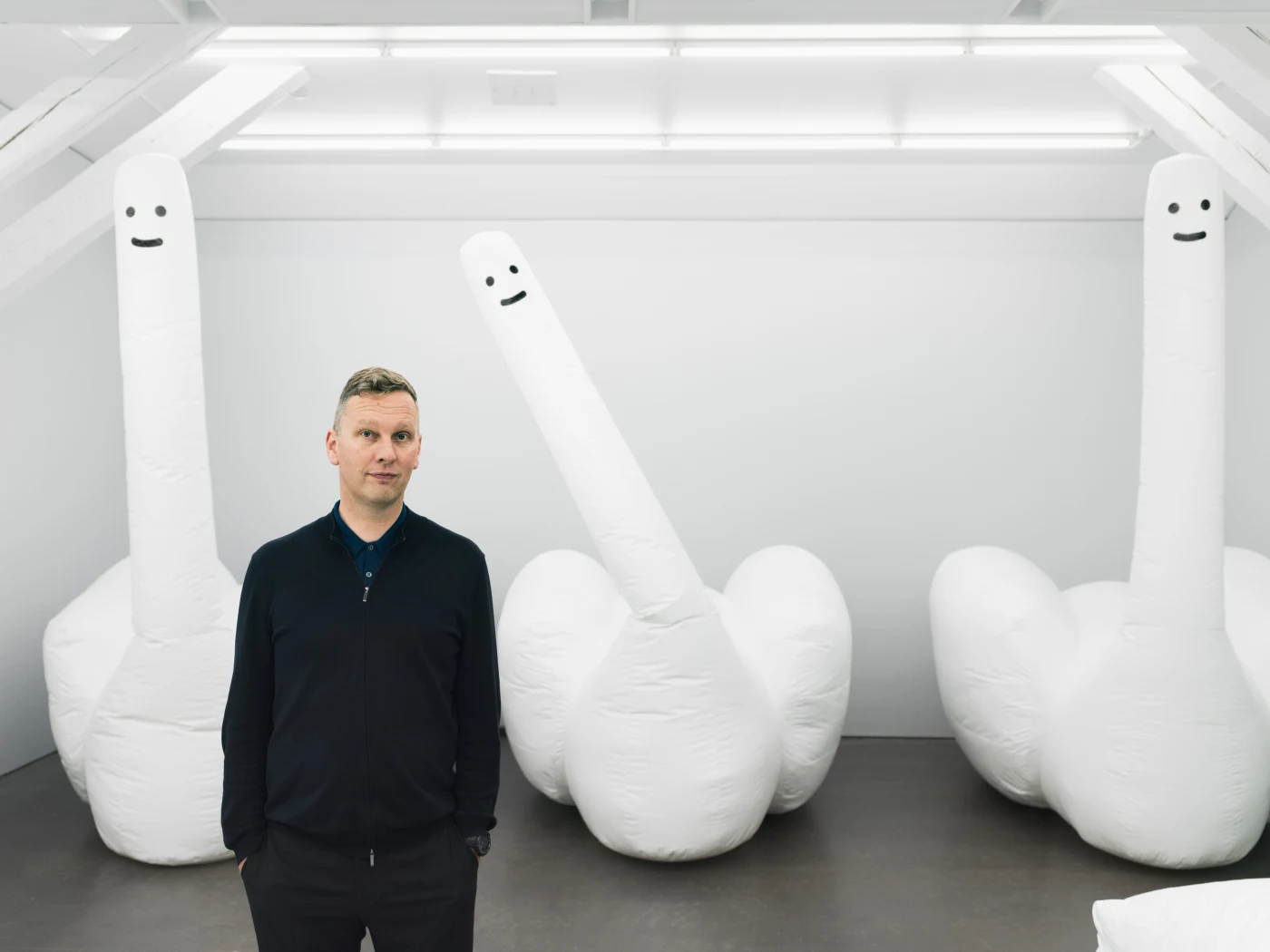Overview
British artist David Shrigley is celebrated for his instantly recognisable visual language and wry observations on everyday situations and human interactions.
In this new series of 95 colour works on paper, the artist showcases his playful yet incisive approach, combining bold colours with sharp, darkly comic text. Rendered in his distinctive drawing style, each painting delivers a succinct message that oscillates between the banal, ironic and existential. All works are sold framed.
British artist David Shrigley is celebrated for his instantly recognisable visual language and wry observations on everyday situations and human interactions.
My working method is to make a set number of drawings every day. In doing that, it's a good way to avoid contrivance. So my only task is to really just to sort of fill the page or fill a number of pages and then somehow the work seems to make itself. But if I focus on the process rather than the finished artwork, then that somehow allows me to make something that somehow works.

Artist biography
David Shrigley was born in 1968 in Macclesfield, UK and lives and works in Brighton.
Shrigley’s monumental sculpture ‘Really Good' was unveiled in Trafalgar Square, London for the Fourth Plinth Commission in September 2016. The sculpture travelled to Melbourne, Australia in 2023 to be included in the NGV Triennial, alongside his evolving work ‘Tennis Ball Exchange’. In October 2024, a three-metre-tall animatronic praying mantis, ‘The Mantis Muse’, was installed at his former school in Leicester. Intended for students to respond to in art classes, he aimed to highlight the importance of arts education and advocate for increased arts programme funding in schools across the UK.
His major solo exhibition ‘What the Hell Was I Thinking?’ will open at Kunsthal Rotterdam, Rotterdam, Netherlands, in December 2025.
Shrigley’s works can be found in prominent collections internationally, including Museum of Modern Art, New York, USA; Art Institute of Chicago, Illinois, USA; Museum Ludwig, Cologne, Germany; Pinakothek der Moderne, Munich, Germany; Centre Pompidou, Paris, France; Statens Museum for Kunst, Copenhagen, Denmark; Thyssen-Bornemisza Contemporary Art Foundation, Vienna, Austria; Scottish National Gallery of Modern Art, Edinburgh, Scotland; Tate, UK; British Council, London, UK; and National Gallery of Victoria, Melbourne, Australia.

Comedy isn’t the antonym of seriousness, it’s not the opposite. The opposite of competence […] the opposite of comedy is sadness, misery. Maybe people would argue with that, but that’s my understanding.

Discussing the inspiration of Dada, an art movement formed during the First World War, on his practice, Shrigley says “That’s always been my influence throughout my life, ever since I first started reading about art movements when I was a teenager. I think it was the Thames & Hudson book of dada – this is probably in about 1979 – with little black and white illustrations. Francis Picabia, Marcel Duchamp: they were the artists I wanted to be. It was the otherness of that thought process that I was interested in.”
I don’t have a manifesto for my body of work. When I am making a work or a drawing I am filling a page and when it is full I am finished. It is just a process.
David Shrigley



































